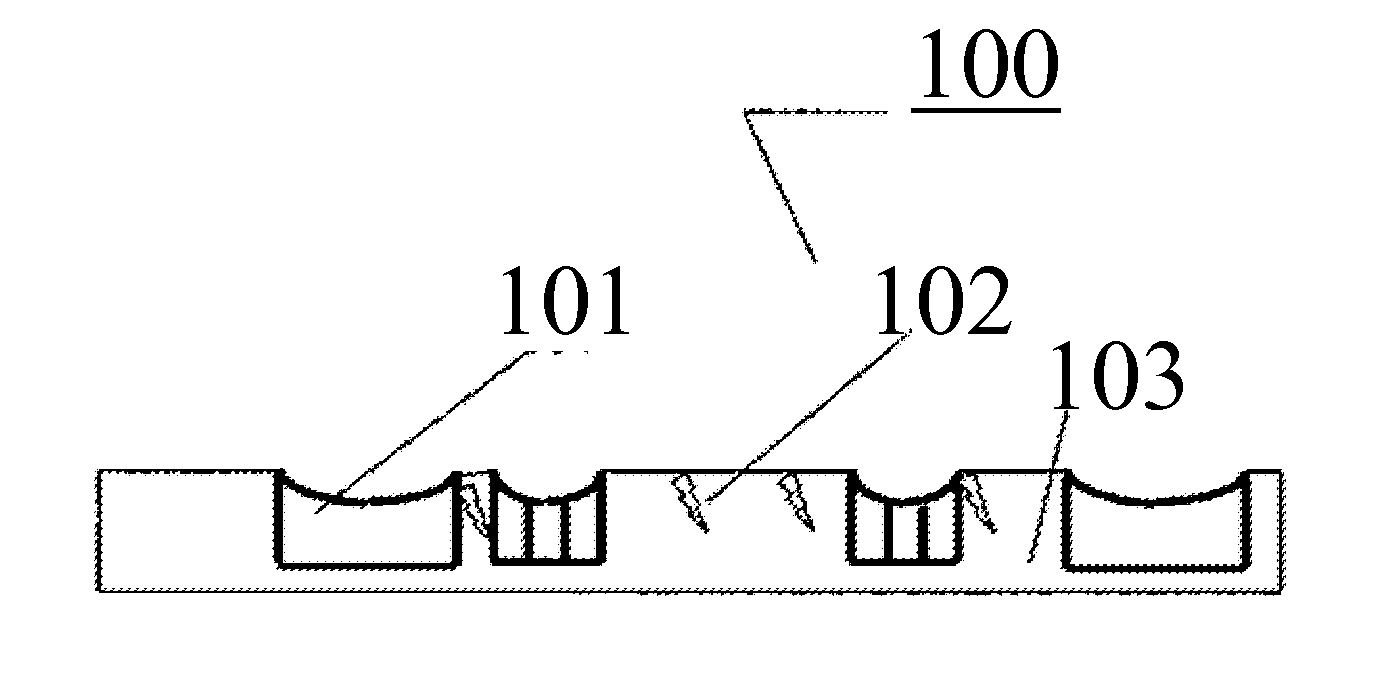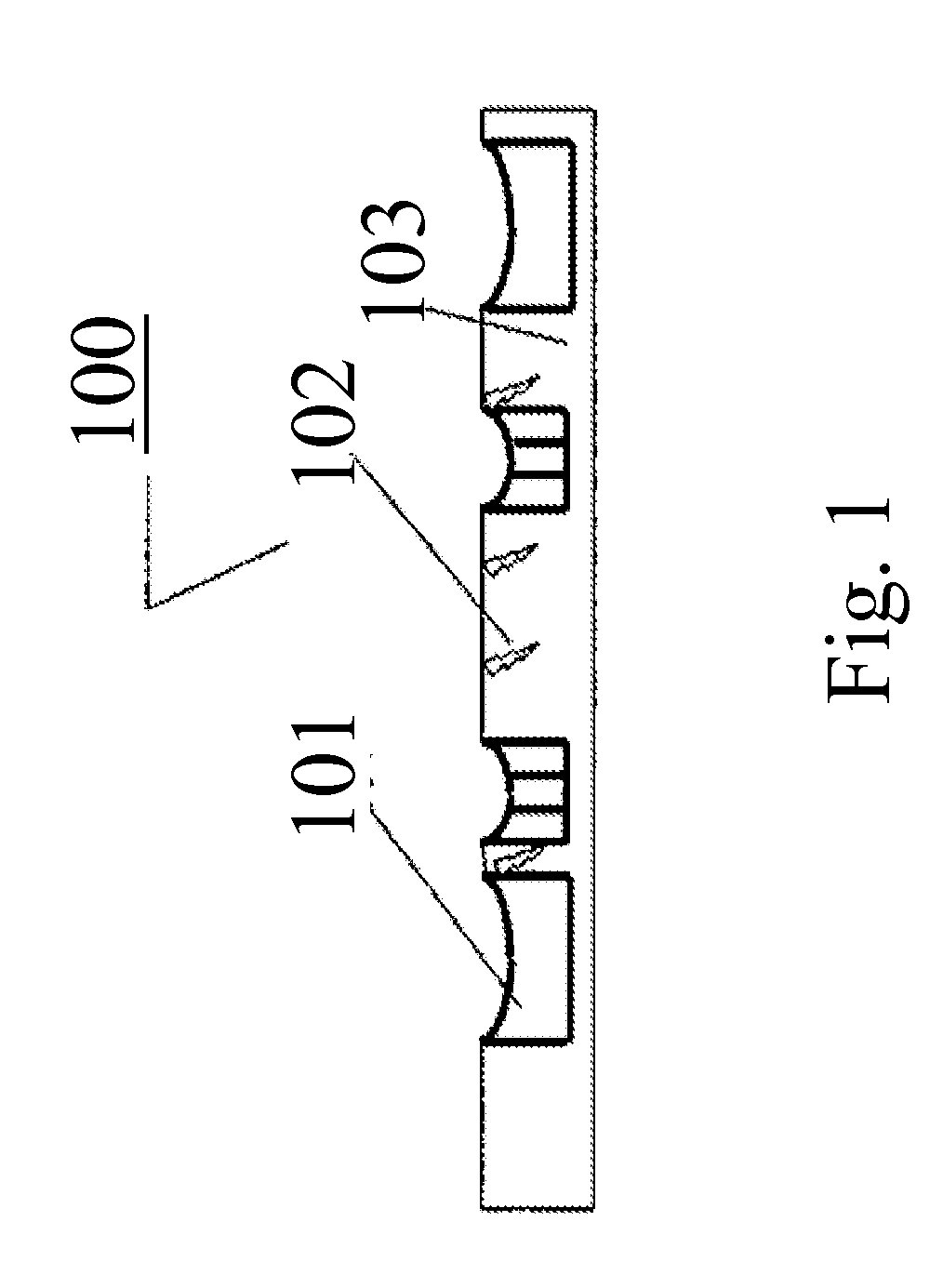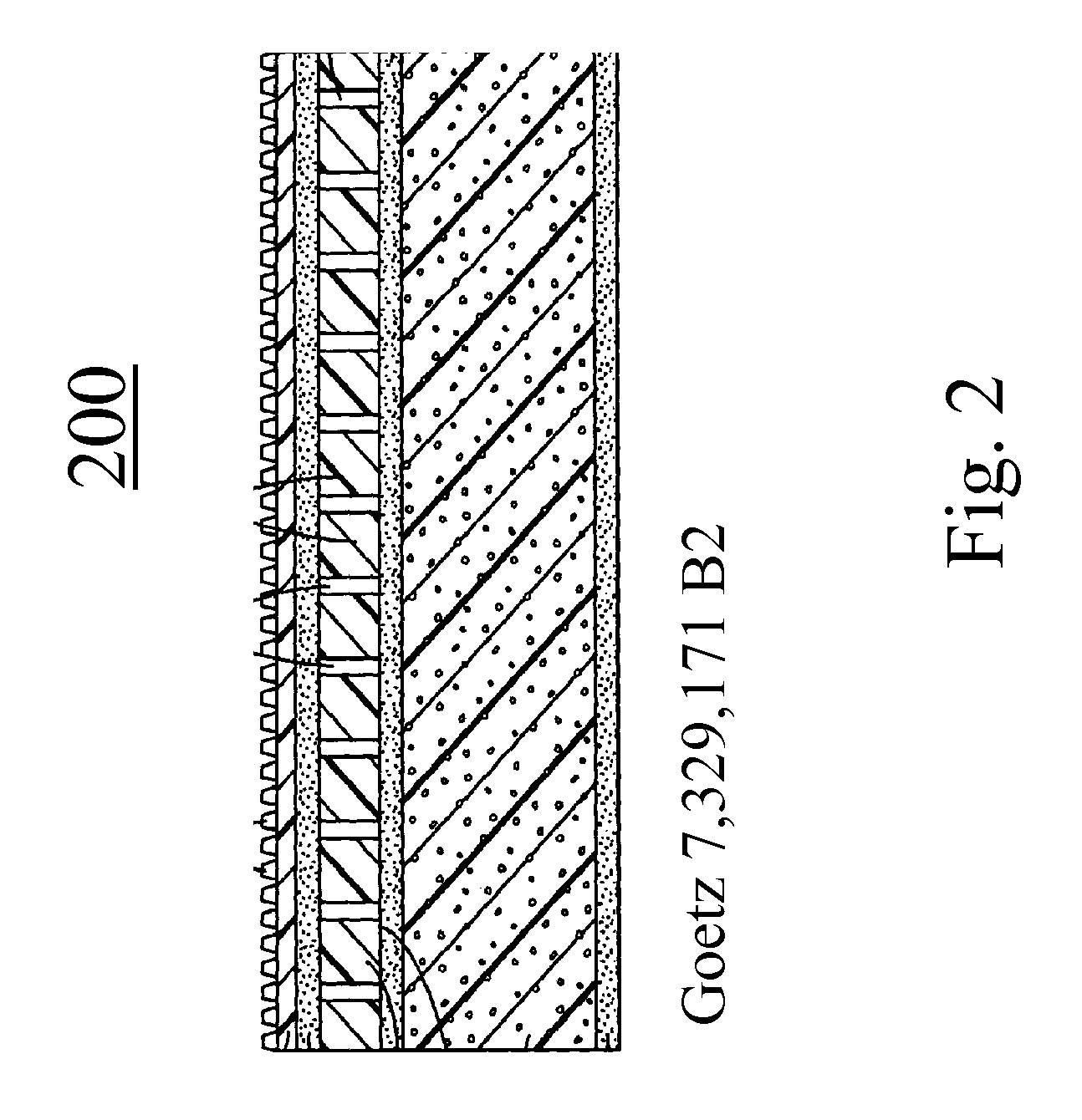Composite polishing pad
a polishing pad and composite technology, applied in the field of abrasive articles, can solve the problems of poor wiwnu film removal, difficult to achieve both these objectives at the same time, and difficult to achieve good wiwnu polishing
- Summary
- Abstract
- Description
- Claims
- Application Information
AI Technical Summary
Problems solved by technology
Method used
Image
Examples
Embodiment Construction
[0039]Described herein is a pad suitable in a variety of CMP processes. A plurality of independently suspended polishing pads 401 are assembled into a polishing article 400 referred to as composite polishing pad (CPP). Each polishing pad is suspended to a pressure pad 402 attached to a flexure 403 and subject to a substantially constant preload. The preload is applied through a stem end 406 referred to as dimple acting on the opposite side of the flexure suspending the polishing pad. Each polishing pad applies a substantially constant pressure via the stem independently of its location on the semiconductor wafer. The suspended polishing pad follows the contour of the semiconductor wafer regardless of the waviness of the semiconductor wafer. The preload apparatus is formed of a stem 406 attached to a spring mechanism 407 allowing substantially constant load as a function of vertical displacement. The ability of each polishing pad to comply in the plane of the wafer and follow the waf...
PUM
 Login to View More
Login to View More Abstract
Description
Claims
Application Information
 Login to View More
Login to View More - R&D Engineer
- R&D Manager
- IP Professional
- Industry Leading Data Capabilities
- Powerful AI technology
- Patent DNA Extraction
Browse by: Latest US Patents, China's latest patents, Technical Efficacy Thesaurus, Application Domain, Technology Topic, Popular Technical Reports.
© 2024 PatSnap. All rights reserved.Legal|Privacy policy|Modern Slavery Act Transparency Statement|Sitemap|About US| Contact US: help@patsnap.com










